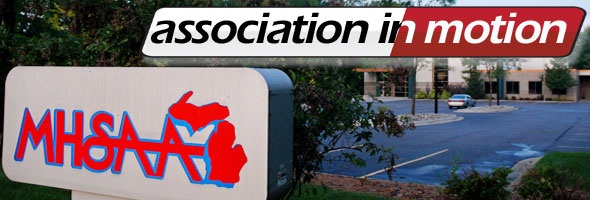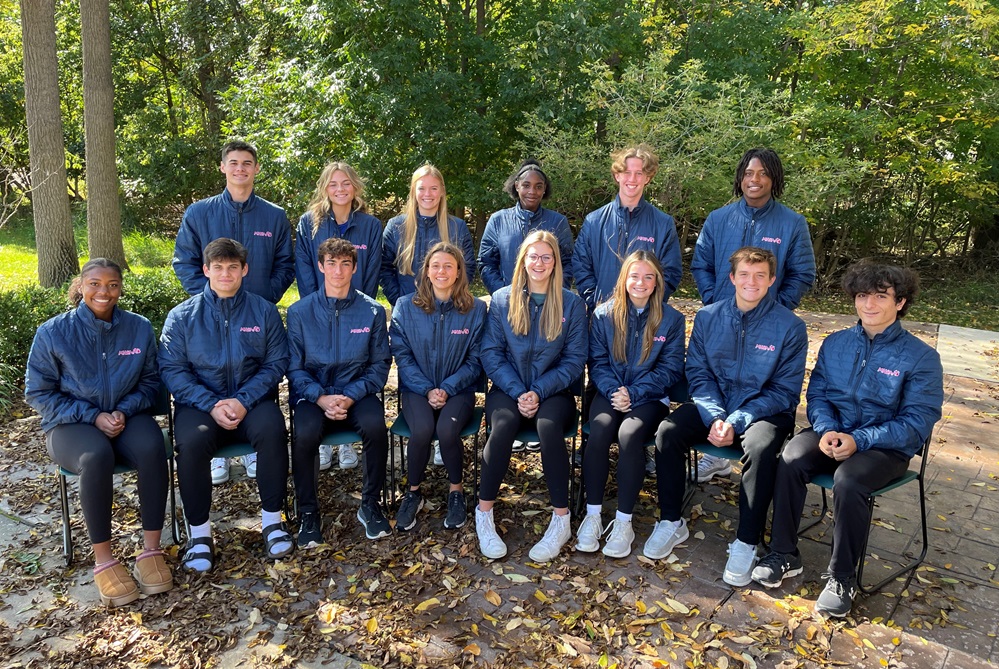
Fall Athletes: Prepare for Hot Weather
July 26, 2018
By Geoff Kimmerly
Second Half editor
As summer activities wind down with an eye toward the beginning of fall sports next month, the MHSAA advises that student-athletes need to prepare for training in the hot weather that traditionally accompanies the beginning of August and the first practices of the school year.
Each year, the MHSAA provides information to its member schools to help them prepare for hot weather practice and game conditions during the late summer and early fall. Football practice can begin at MHSAA schools August 6, followed by first practices for all other fall sports August 8.
The topic of heat-related injuries receives a lot of attention at this time of year, especially when deaths at the professional, collegiate and interscholastic levels of sport occur, and especially since they are preventable in most cases with the proper precautions.
“This month’s high temperatures across much of Michigan served as a reminder that we all must take a role in making sure our student-athletes are ready for hot weather as practices get underway,” said John E. “Jack” Roberts, executive director of the MHSAA. “At the start of every fall, we point out that with proper precautions and planning, heat illness is almost always preventable. It is imperative that we continue to emphasize this message and teach the best practices for staying safe both to our returning student-athletes and those taking part for the first time.”
Heat, hydration and acclimatization continue to be focuses of the MHSAA’s required preseason rules meetings for coaches and officials. The online presentations discuss the need for good hydration in sports, regardless of the activity or time of year, and informs both how to recognize the early signs of heat illness and the immediate steps to take to respond to those symptoms. The MHSAA requires all head varsity, varsity assistant and subvarsity coaches at the high school level to complete the rules and risk minimization meeting requirement.
The first days of formal practices in hot weather should be more for heat acclimatization than the conditioning of athletes, and practices in such conditions need planning to become longer and more strenuous over a gradual progression of time. Schools also must consider moving practices to different locations or different times of day, or change practice plans to include different activities depending on the conditions. Furthermore, football practice rules allow for only helmets to be worn during the first two days, only shoulder pads to be added on the third and fourth days, and full pads to not be worn until the fifth day of team practice.
Roberts also emphasized that student-athletes should make sure to hydrate all day long – beginning before practice, continuing during and also after practice is done. Water and properly-formulated sports drinks are the best choices for hydration, while energy drinks, high-carbohydrate fruit juices (greater than eight percent carb content), carbonated and caffeinated beverages are among those that should be avoided. The “Health & Safety” page of the MHSAA Website has a number of links to various publications and information including recommendations on proper hydration from the National Federation of State High School Associations (NFHS).
A number of member schools follow the MHSAA’s Model Policy for Managing Heat & Humidity, which while not mandated for member schools was adopted as a rule for MHSAA postseason competition in 2013. The plan directs schools to begin monitoring the heat index at the activity site once the air temperature reaches 80 degrees, and provides recommendations when the heat index reaches certain points, including ceasing activities when it rises above 104 degrees. (When the temperature is below 80 degrees, there is no combination of heat and humidity that will result in a need to curtail activity.)
The model heat & humidity policy is outlined in a number of places on the MHSAA Website, including as part of the publication Heat Ways, also available for download from the “Health & Safety” page.

MHSAA Accepting Student Advisory Council Applications for Class of 2026
By
Geoff Kimmerly
MHSAA.com senior editor
April 11, 2024
The Michigan High School Athletic Association is seeking student-athletes to become members of its Student Advisory Council beginning with the 2024-25 school year.
Four boys and four girls from the Class of 2026 will be selected to two-year terms, and will meet on matters related to maintaining and promoting a proper perspective and sensible scope for high school sports in Michigan. Eight members from the Class of 2025 already are serving on the Council, while eight members from the Class of 2024 are leaving the Council this spring.
To be eligible for the committee, candidates must be a member of the Class of 2026, complete the official application including answering the three short-answer questions, submit a letter of recommendation from a school administrator, have a cumulative GPA of at least 3.0 (on a 4.0 scale) and be available for all scheduled meetings.
In addition, candidates should show a history of leadership on athletic teams as well as with other extracurricular activities, community service projects, or in the workplace; and show an understanding of the role of school sports and have ideas for promoting a proper perspective for educational athletics.
Applications are due to the MHSAA by 4:30 p.m. on April 22. Applications can be downloaded from the Student Advisory Council page of the MHSAA Website and must be returned via e-mail, fax or any mail delivery service.
The Student Advisory Council meets six times each school year, and once more for a 24-hour leadership camp. In addition to assisting in the promotion of the educational value of interscholastic athletics, the Council discusses issues dealing with the 4 S’s of educational athletics: scholarship, sportsmanship, safety (including health and nutrition) and the sensible scope of athletic programs. A fifth S – student leadership – is also a common topic. Members contribute to the planning of Sportsmanship Summits, Captains Clinics and other student leadership events, and assist with medal ceremonies at MHSAA championship events.
Newly-chosen members will join the following from the Class of 2025: Cale Bell, Sault Ste. Marie; Drew Cady, Oxford; Macy Jenkins, Milford; Isaiah Kabban, Harbor Beach; Ella Knudsen, Leland; Kaylee Kranz, Clinton; Joey Spada, Kalamazoo Central; and Aynalem Zoet, Grandville Calvin Christian.
The eight new members of the Student Advisory Council will be notified by May 3. The 2024-25 meetings are tentatively scheduled for Aug. 25, Oct. 6, Dec. 8, Feb. 16 and April 27, in addition to the leadership camp June 18-19 and with a May 2025 meeting still to be scheduled. Meetings will take place at the MHSAA Office in East Lansing, For additional information, contact Andy Frushour at the MHSAA at (517) 332-5046 or [email protected].

